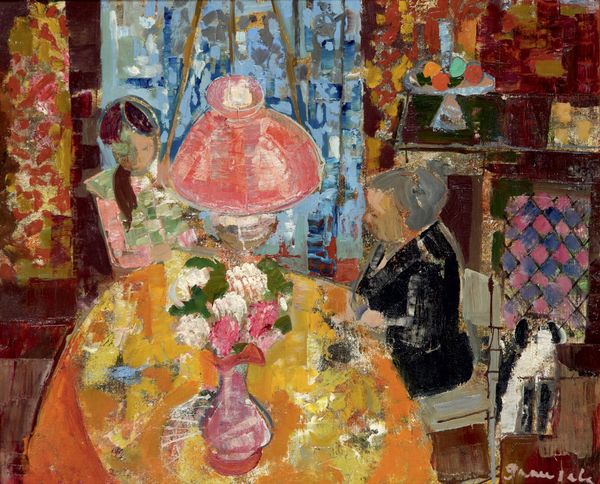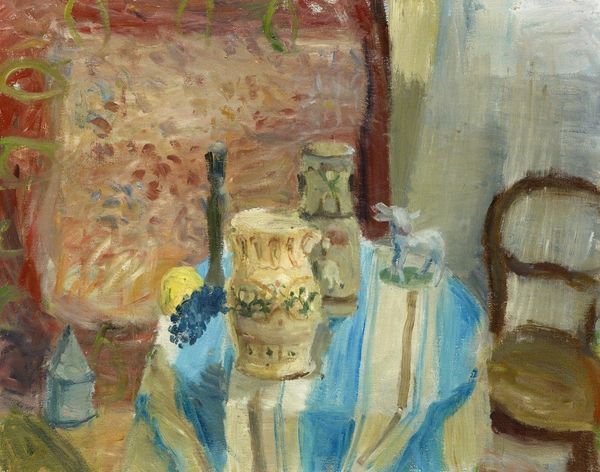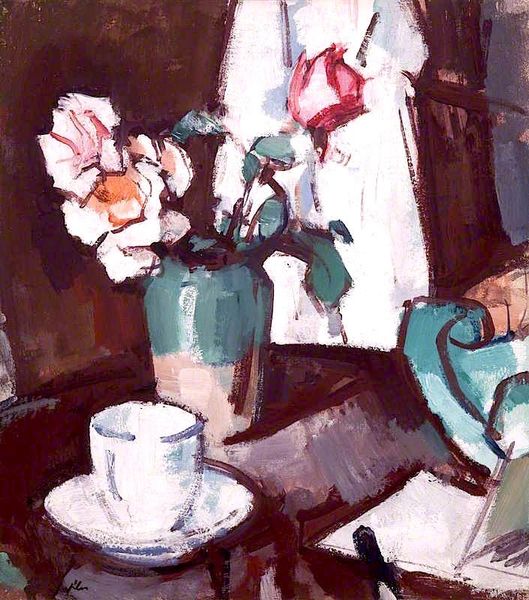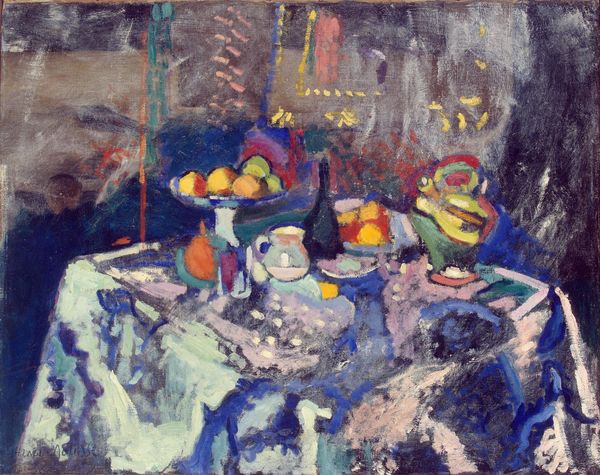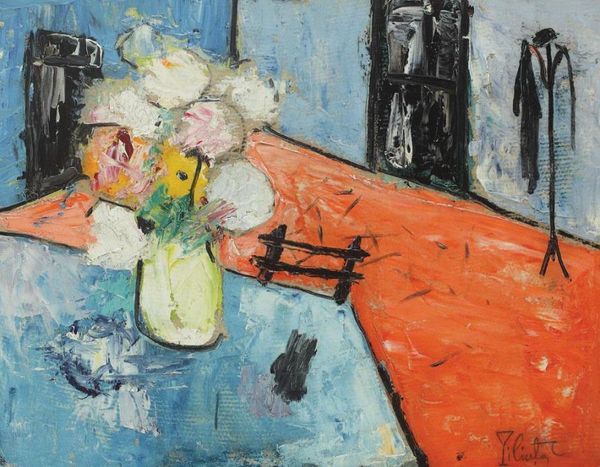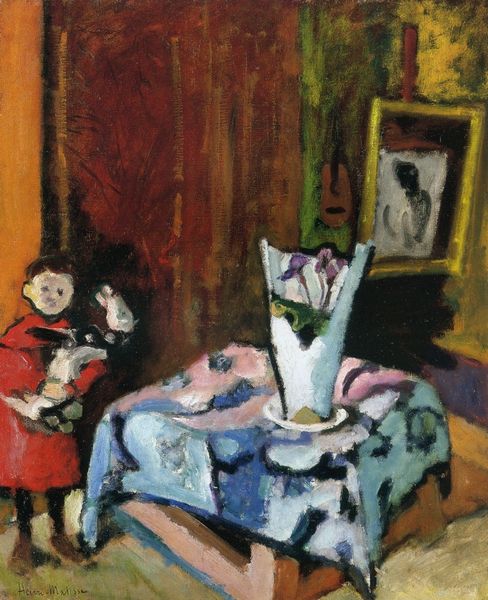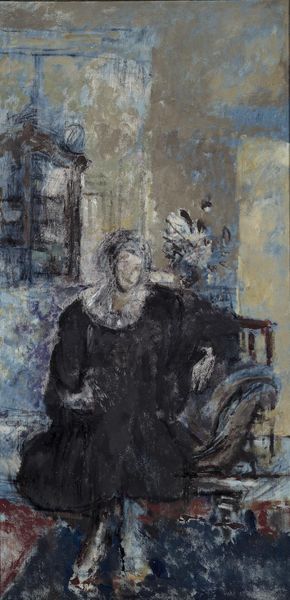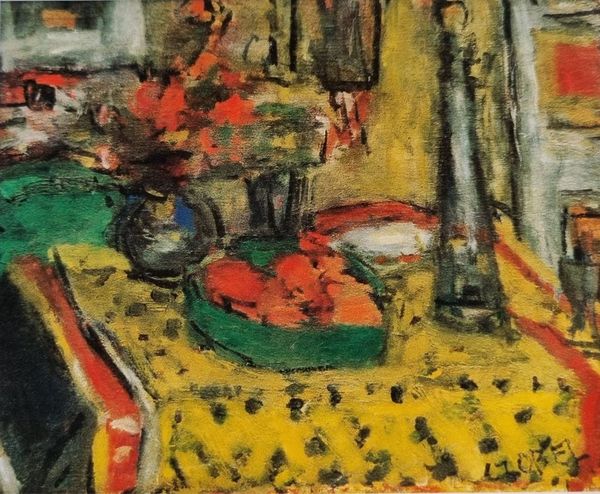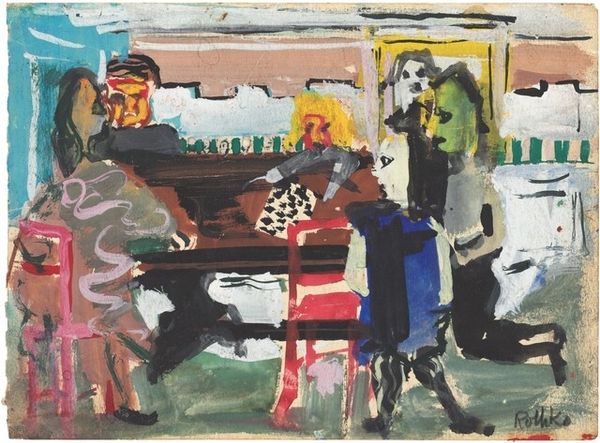
painting, oil-paint
#
portrait
#
painting
#
oil-paint
#
oil painting
#
intimism
#
group-portraits
#
les-nabis
#
genre-painting
#
modernism
Dimensions: 48.9 x 59 cm
Copyright: Public domain
Editor: Here we have Édouard Vuillard's "The Table," painted in 1909. It's an oil painting depicting a group of people around, well, a table. The mood is very subdued, almost secretive, with those muted colours. What strikes you when you look at this piece? Curator: It invites us to consider the private sphere during a period of immense social change. The Intimists, like Vuillard, were fascinated by bourgeois domestic life, but I'm always drawn to how these scenes, seemingly benign, often conceal unspoken power dynamics. Look at the positioning of the figures – who commands attention, who seems more peripheral? Consider the setting in relation to gender roles in early 20th century France: how might a seemingly harmless family meal perpetuate certain societal structures and expectations? Editor: I see what you mean. There's a sense of constraint, perhaps. Is that fair? Curator: Exactly! Think about whose voices are heard and whose are silenced in these intimate settings. The Nabi artists, to which Vuillard belonged, embraced the decorative, but we need to consider this aesthetic choice through the lens of social critique. Is the flattened perspective and the emphasis on pattern a deliberate obscuring of reality, a commentary on the surface appearances of bourgeois life? Are we being shut out of their world? Editor: It’s funny, I saw it as a quiet domestic scene, but now I see the tension simmering underneath. Curator: And that tension, I would argue, is the most truthful part of the painting. These images often omit workers, labor. If you don’t acknowledge absences, what are you really saying? Editor: So by depicting this scene, Vuillard is perhaps subtly questioning the social norms of his time? Curator: Precisely. Art is never truly separate from the world it reflects, nor from the people absent from the picture. Always seek alternative points of view. Editor: That’s a completely new way of viewing this painting for me! Curator: It’s about peeling back the layers to understand what's truly at the table. It’s all a balance.
Comments
No comments
Be the first to comment and join the conversation on the ultimate creative platform.

